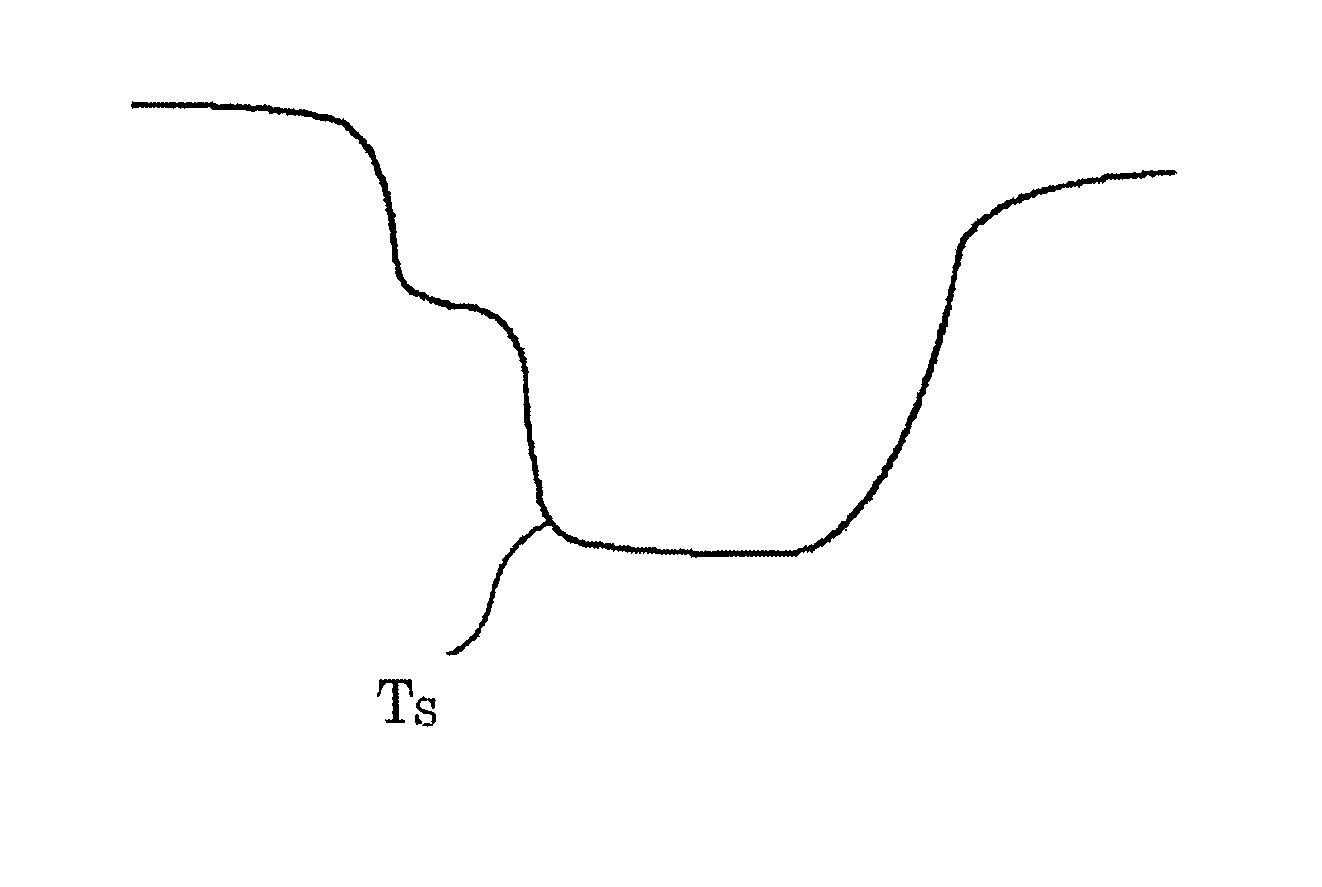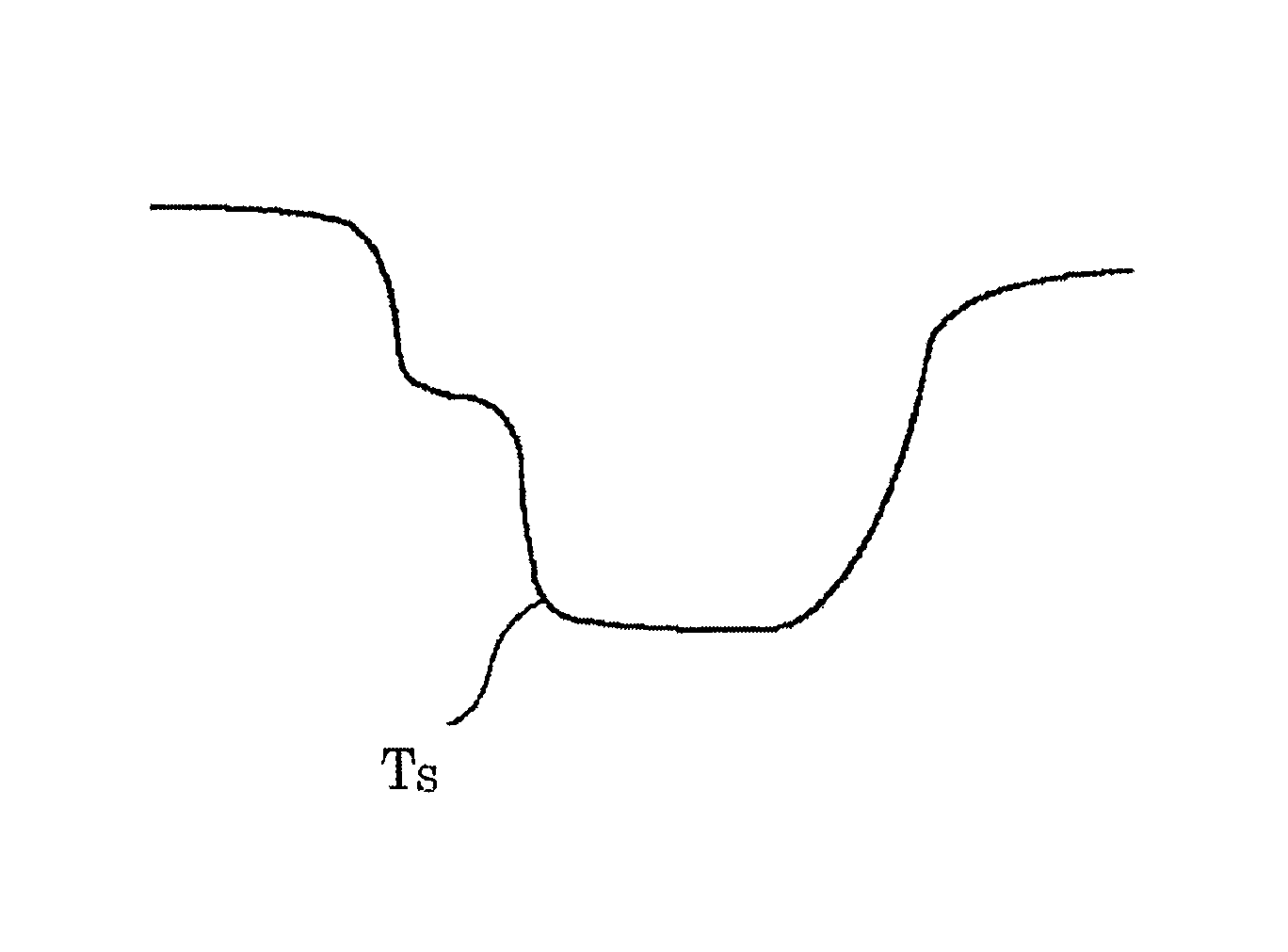Sealing material and paste material using same
a technology of sealing material and paste material, which is applied in the direction of electrical equipment, semiconductor devices, solid-state devices, etc., can solve the problems of inability to maintain display, inability to completely block gas and moisture penetration, and inability to completely block the penetration of organic resin-based bonding materials, etc., to achieve low softening point, improve sealing effect, and reduce thermal expansion coefficient
- Summary
- Abstract
- Description
- Claims
- Application Information
AI Technical Summary
Benefits of technology
Problems solved by technology
Method used
Image
Examples
example 1
[0161]Hereinafter, examples of the first embodiment are described in detail. It should be noted that the following examples are merely for illustrative purposes. The present invention is not limited to the following examples at all.
[0162]Table 2 shows each SnO-containing glass powder (Sample Nos. 1 to 7) according to the examples.
[0163]
TABLE 2No.No.No.No.No.No.No.1234567(mol %)SnO59646455505655.1P2O520252421233227ZnO5431010813B2O3154710120.9Al2O311234Li2O1122K2O1122Melting950900900950950900900temperature (° C.)Glass transition320295307323334305310point (° C.)Softening point395365378393407380385(° C.)Thermal expansion10612511810296120113coefficient(×10−7 / ° C.)
[0164]Each glass powder was prepared as follows. First, raw materials were blended so that each glass composition shown in Table 2 was attained. After that, each blended material was fed into an alumina crucible and was melted for 1 to 2 hours at each melting temperature shown in the table under a nitrogen atmosphere. Next, the ...
example 2
[0183]Hereinafter, examples of the second embodiment are described in detail. It should be noted that the following examples are merely for illustrative purposes. The present invention is not limited to the following examples at all.
[0184]Table 4 shows each SnO-containing glass powder (Sample Nos. 8 to 14) according to the examples.
[0185]
TABLE 4No.No.No.No.No.No.No.891011121314(mol %)SnO59646455505655.1P2O520252421233227ZnO5431010813B2O3154710120.9Al2O311234Li2O1122K2O1122Melting950900900950950900900temperature (° C.)Glass transition320295307323334305310point (° C.)Softening point395365378393407380385(° C.)Thermal expansion10612511810296120113coefficient(×10−7 / ° C.)
[0186]Each glass powder was prepared as follows. First, raw materials were blended so that each glass composition shown in Table 4 was attained. After that, each blended material was fed into an alumina crucible and was melted for 1 to 2 hours at each melting temperature shown in the table under a nitrogen atmosphere. Nex...
example 3
[0198]Each sealing material (Samples O to U) was produced in the same manner as that used for producing Sample H in Table 5 except that only the average particle diameter D50 of the primary particles of the pigment was changed and adjusted. The sealing material was used to survey the influence of the average particle diameter D50 of the primary particles of the pigment on the softening and flow characteristics. Table 6 shows the results.
[0199]
TABLE 6ComparativeComparativeExampleExampleExampleOPQRSTUAverage particle0.1212223572120diameter (nm) ofprimary particlesof pigmentSoftening andxΔ∘∘∘Δxflow characteristics
[0200]The softening and flow characteristics were evaluated as follows. That is, a glass substrate with a glazed film produced under the same condition as that used for producing the glass substrate with a glazed film in order to evaluate laser sealing property in Example 2 was irradiated with laser radiation under the same condition as that used for evaluating laser sealing p...
PUM
 Login to View More
Login to View More Abstract
Description
Claims
Application Information
 Login to View More
Login to View More - R&D
- Intellectual Property
- Life Sciences
- Materials
- Tech Scout
- Unparalleled Data Quality
- Higher Quality Content
- 60% Fewer Hallucinations
Browse by: Latest US Patents, China's latest patents, Technical Efficacy Thesaurus, Application Domain, Technology Topic, Popular Technical Reports.
© 2025 PatSnap. All rights reserved.Legal|Privacy policy|Modern Slavery Act Transparency Statement|Sitemap|About US| Contact US: help@patsnap.com


